Xiaodong Chen
Nanyang Technological University Singapore
Knocking-Heads Attention
Oct 27, 2025Abstract:Multi-head attention (MHA) has become the cornerstone of modern large language models, enhancing representational capacity through parallel attention heads. However, increasing the number of heads inherently weakens individual head capacity, and existing attention mechanisms - whether standard MHA or its variants like grouped-query attention (GQA) and grouped-tied attention (GTA) - simply concatenate outputs from isolated heads without strong interaction. To address this limitation, we propose knocking-heads attention (KHA), which enables attention heads to "knock" on each other - facilitating cross-head feature-level interactions before the scaled dot-product attention. This is achieved by applying a shared, diagonally-initialized projection matrix across all heads. The diagonal initialization preserves head-specific specialization at the start of training while allowing the model to progressively learn integrated cross-head representations. KHA adds only minimal parameters and FLOPs and can be seamlessly integrated into MHA, GQA, GTA, and other attention variants. We validate KHA by training a 6.1B parameter MoE model (1.01B activated) on 1T high-quality tokens. Compared to baseline attention mechanisms, KHA brings superior and more stable training dynamics, achieving better performance across downstream tasks.
Grove MoE: Towards Efficient and Superior MoE LLMs with Adjugate Experts
Aug 11, 2025Abstract:The Mixture of Experts (MoE) architecture is a cornerstone of modern state-of-the-art (SOTA) large language models (LLMs). MoE models facilitate scalability by enabling sparse parameter activation. However, traditional MoE architecture uses homogeneous experts of a uniform size, activating a fixed number of parameters irrespective of input complexity and thus limiting computational efficiency. To overcome this limitation, we introduce Grove MoE, a novel architecture incorporating experts of varying sizes, inspired by the heterogeneous big.LITTLE CPU architecture. This architecture features novel adjugate experts with a dynamic activation mechanism, enabling model capacity expansion while maintaining manageable computational overhead. Building on this architecture, we present GroveMoE-Base and GroveMoE-Inst, 33B-parameter LLMs developed by applying an upcycling strategy to the Qwen3-30B-A3B-Base model during mid-training and post-training. GroveMoE models dynamically activate 3.14-3.28B parameters based on token complexity and achieve performance comparable to SOTA open-source models of similar or even larger size.
MoBE: Mixture-of-Basis-Experts for Compressing MoE-based LLMs
Aug 07, 2025Abstract:The Mixture-of-Experts (MoE) architecture has become a predominant paradigm for scaling large language models (LLMs). Despite offering strong performance and computational efficiency, large MoE-based LLMs like DeepSeek-V3-0324 and Kimi-K2-Instruct present serious challenges due to substantial memory requirements in deployment. While recent works have explored MoE compression to address this issue, existing methods often suffer from considerable accuracy drops (e.g., 7-14% relatively) even at modest compression rates. This paper introduces a novel Mixture-of-Basis-Experts (MoBE) method that achieves model compression while incurring minimal accuracy drops. Specifically, each up/gate matrix in an expert is decomposed via a rank decomposition as W = AB, where matrix A is unique to each expert. The relatively larger matrix B is further re-parameterized as a linear combination of basis matrices {Bi} shared across all experts within a given MoE layer. The factorization is learned by minimizing the reconstruction error relative to the original weight matrices. Experiments demonstrate that MoBE achieves notably lower accuracy drops compared to prior works. For instance, MoBE can reduce the parameter counts of Qwen3-235B-A22B-2507, DeepSeek-V3-0324 (671B) and Kimi-K2-Instruct (1T) by 24%-30% with only 1%-2% accuracy drop (about 2% drops when measured relatively).
QUAD: Quantization and Parameter-Efficient Tuning of LLM with Activation Decomposition
Mar 25, 2025Abstract:Large Language Models (LLMs) excel in diverse applications but suffer inefficiency due to massive scale. While quantization reduces computational costs, existing methods degrade accuracy in medium-sized LLMs (e.g., Llama-3-8B) due to activation outliers. To address this, we propose QUAD (Quantization with Activation Decomposition), a framework leveraging Singular Value Decomposition (SVD) to suppress activation outliers for effective 4-bit quantization. QUAD estimates activation singular vectors offline using calibration data to construct an orthogonal transformation matrix P, shifting outliers to additional dimensions in full precision while quantizing rest components to 4-bit. Additionally, QUAD enables parameter-efficient fine-tuning via adaptable full-precision outlier weights, narrowing the accuracy gap between quantized and full-precision models. Experiments demonstrate that QUAD achieves 94% ~ 96% accuracy under W4A4 quantization and 98% accuracy with W4A4/A8 and parameter-efficient fine-tuning for Llama-3 and Qwen-2.5 models. Our code is available at \href{https://github.com/hyx1999/Quad}{repository}.
MTV-Inpaint: Multi-Task Long Video Inpainting
Mar 14, 2025Abstract:Video inpainting involves modifying local regions within a video, ensuring spatial and temporal consistency. Most existing methods focus primarily on scene completion (i.e., filling missing regions) and lack the capability to insert new objects into a scene in a controllable manner. Fortunately, recent advancements in text-to-video (T2V) diffusion models pave the way for text-guided video inpainting. However, directly adapting T2V models for inpainting remains limited in unifying completion and insertion tasks, lacks input controllability, and struggles with long videos, thereby restricting their applicability and flexibility. To address these challenges, we propose MTV-Inpaint, a unified multi-task video inpainting framework capable of handling both traditional scene completion and novel object insertion tasks. To unify these distinct tasks, we design a dual-branch spatial attention mechanism in the T2V diffusion U-Net, enabling seamless integration of scene completion and object insertion within a single framework. In addition to textual guidance, MTV-Inpaint supports multimodal control by integrating various image inpainting models through our proposed image-to-video (I2V) inpainting mode. Additionally, we propose a two-stage pipeline that combines keyframe inpainting with in-between frame propagation, enabling MTV-Inpaint to effectively handle long videos with hundreds of frames. Extensive experiments demonstrate that MTV-Inpaint achieves state-of-the-art performance in both scene completion and object insertion tasks. Furthermore, it demonstrates versatility in derived applications such as multi-modal inpainting, object editing, removal, image object brush, and the ability to handle long videos. Project page: https://mtv-inpaint.github.io/.
VisualSimpleQA: A Benchmark for Decoupled Evaluation of Large Vision-Language Models in Fact-Seeking Question Answering
Mar 09, 2025Abstract:Large vision-language models (LVLMs) have demonstrated remarkable achievements, yet the generation of non-factual responses remains prevalent in fact-seeking question answering (QA). Current multimodal fact-seeking benchmarks primarily focus on comparing model outputs to ground truth answers, providing limited insights into the performance of modality-specific modules. To bridge this gap, we introduce VisualSimpleQA, a multimodal fact-seeking benchmark with two key features. First, it enables streamlined and decoupled evaluation of LVLMs in visual and linguistic modalities. Second, it incorporates well-defined difficulty criteria to guide human annotation and facilitates the extraction of a challenging subset, VisualSimpleQA-hard. Experiments on 15 LVLMs show that even state-of-the-art models such as GPT-4o achieve merely 60%+ correctness in multimodal fact-seeking QA on VisualSimpleQA and 30%+ on VisualSimpleQA-hard. Furthermore, the decoupled evaluation across these models highlights substantial opportunities for improvement in both visual and linguistic modules. The dataset is available at https://huggingface.co/datasets/WYLing/VisualSimpleQA.
LoRS: Efficient Low-Rank Adaptation for Sparse Large Language Model
Jan 15, 2025Abstract:Existing low-rank adaptation (LoRA) methods face challenges on sparse large language models (LLMs) due to the inability to maintain sparsity. Recent works introduced methods that maintain sparsity by augmenting LoRA techniques with additional masking mechanisms. Despite these successes, such approaches suffer from an increased memory and computation overhead, which affects efficiency of LoRA methods. In response to this limitation, we introduce LoRS, an innovative method designed to achieve both memory and computation efficiency when fine-tuning sparse LLMs. To mitigate the substantial memory and computation demands associated with preserving sparsity, our approach incorporates strategies of weight recompute and computational graph rearrangement. In addition, we also improve the effectiveness of LoRS through better adapter initialization. These innovations lead to a notable reduction in memory and computation consumption during the fine-tuning phase, all while achieving performance levels that outperform existing LoRA approaches.
T-SVG: Text-Driven Stereoscopic Video Generation
Dec 12, 2024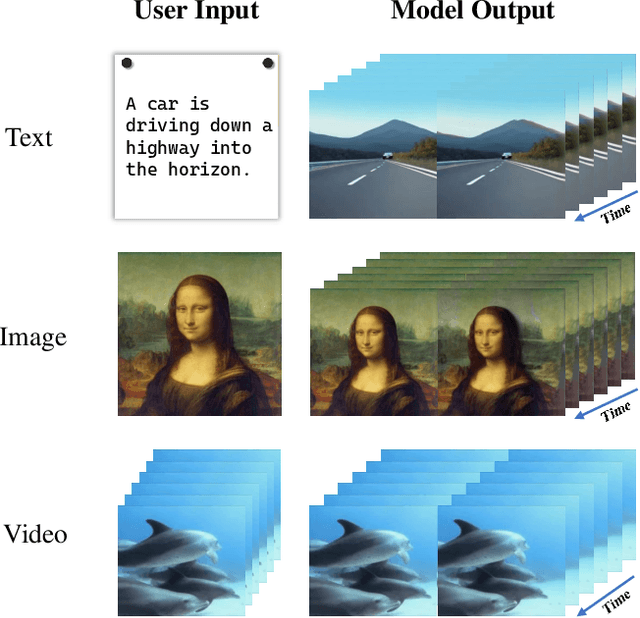


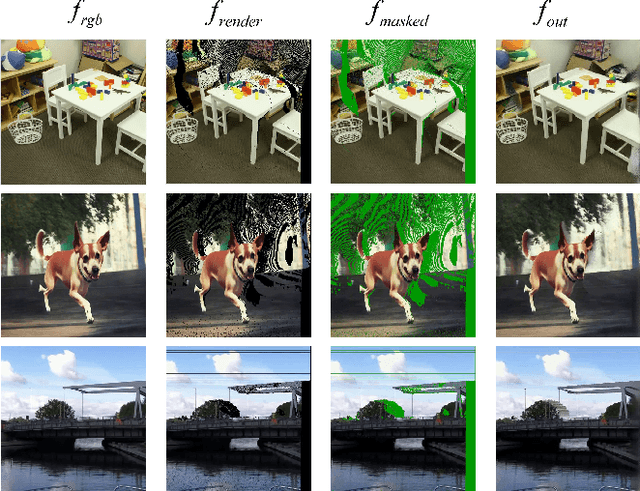
Abstract:The advent of stereoscopic videos has opened new horizons in multimedia, particularly in extended reality (XR) and virtual reality (VR) applications, where immersive content captivates audiences across various platforms. Despite its growing popularity, producing stereoscopic videos remains challenging due to the technical complexities involved in generating stereo parallax. This refers to the positional differences of objects viewed from two distinct perspectives and is crucial for creating depth perception. This complex process poses significant challenges for creators aiming to deliver convincing and engaging presentations. To address these challenges, this paper introduces the Text-driven Stereoscopic Video Generation (T-SVG) system. This innovative, model-agnostic, zero-shot approach streamlines video generation by using text prompts to create reference videos. These videos are transformed into 3D point cloud sequences, which are rendered from two perspectives with subtle parallax differences, achieving a natural stereoscopic effect. T-SVG represents a significant advancement in stereoscopic content creation by integrating state-of-the-art, training-free techniques in text-to-video generation, depth estimation, and video inpainting. Its flexible architecture ensures high efficiency and user-friendliness, allowing seamless updates with newer models without retraining. By simplifying the production pipeline, T-SVG makes stereoscopic video generation accessible to a broader audience, demonstrating its potential to revolutionize the field.
Scaling Law for Post-training after Model Pruning
Nov 15, 2024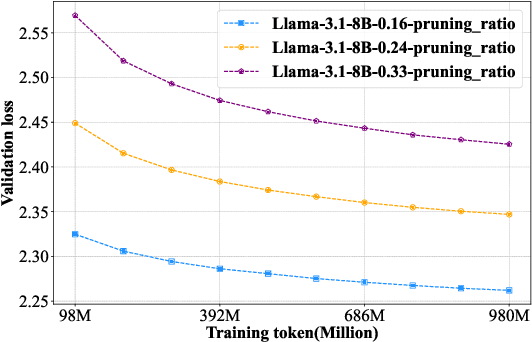
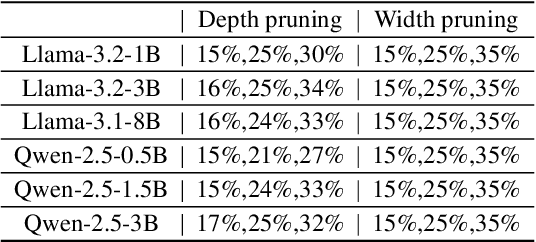
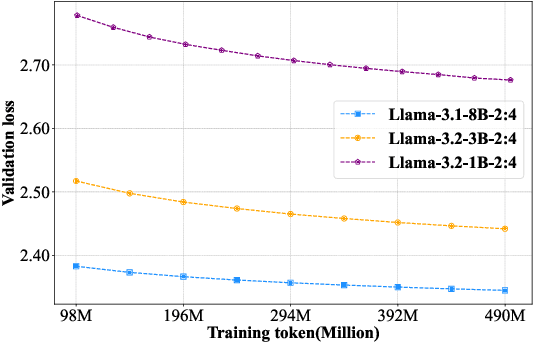
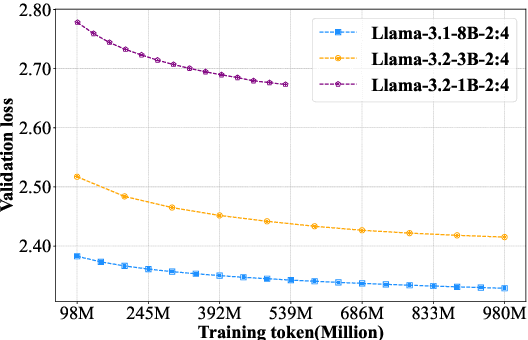
Abstract:Large language models (LLMs) based on the Transformer architecture are widely employed across various domains and tasks. However, their increasing size imposes significant hardware demands, limiting practical deployment. To mitigate this, model pruning techniques have been developed to create more efficient models while maintaining high performance. Despite this, post-training after pruning is crucial for performance recovery and can be resource-intensive. This paper investigates the post-training requirements of pruned LLMs and introduces a scaling law to determine the optimal amount of post-training data. Post-training experiments with the Llama-3 and Qwen-2.5 series models, pruned using depth pruning, width pruning, and 2:4 semi-structured pruning, show that higher pruning ratios necessitate more post-training data for performance recovery, whereas larger LLMs require less. The proposed scaling law predicts a model's loss based on its parameter counts before and after pruning, as well as the post-training token counts. Furthermore, we find that the scaling law established from smaller LLMs can be reliably extrapolated to larger LLMs. This work provides valuable insights into the post-training of pruned LLMs and offers a practical scaling law for optimizing post-training data usage.
Motion Capture from Inertial and Vision Sensors
Jul 23, 2024



Abstract:Human motion capture is the foundation for many computer vision and graphics tasks. While industrial motion capture systems with complex camera arrays or expensive wearable sensors have been widely adopted in movie and game production, consumer-affordable and easy-to-use solutions for personal applications are still far from mature. To utilize a mixture of a monocular camera and very few inertial measurement units (IMUs) for accurate multi-modal human motion capture in daily life, we contribute MINIONS in this paper, a large-scale Motion capture dataset collected from INertial and visION Sensors. MINIONS has several featured properties: 1) large scale of over five million frames and 400 minutes duration; 2) multi-modality data of IMUs signals and RGB videos labeled with joint positions, joint rotations, SMPL parameters, etc.; 3) a diverse set of 146 fine-grained single and interactive actions with textual descriptions. With the proposed MINIONS, we conduct experiments on multi-modal motion capture and explore the possibilities of consumer-affordable motion capture using a monocular camera and very few IMUs. The experiment results emphasize the unique advantages of inertial and vision sensors, showcasing the promise of consumer-affordable multi-modal motion capture and providing a valuable resource for further research and development.
 Add to Chrome
Add to Chrome Add to Firefox
Add to Firefox Add to Edge
Add to Edge